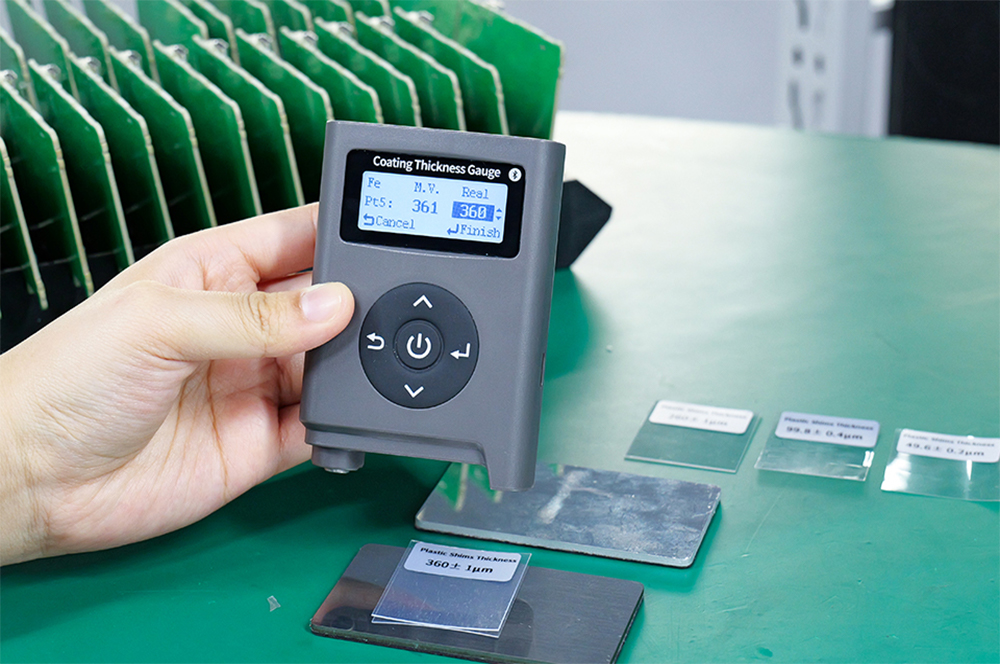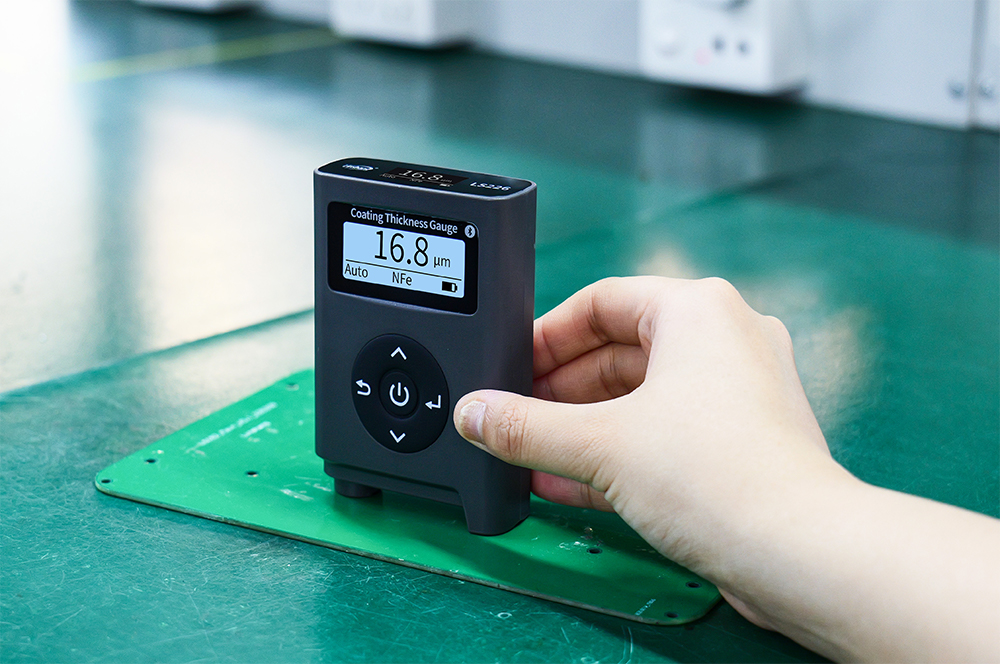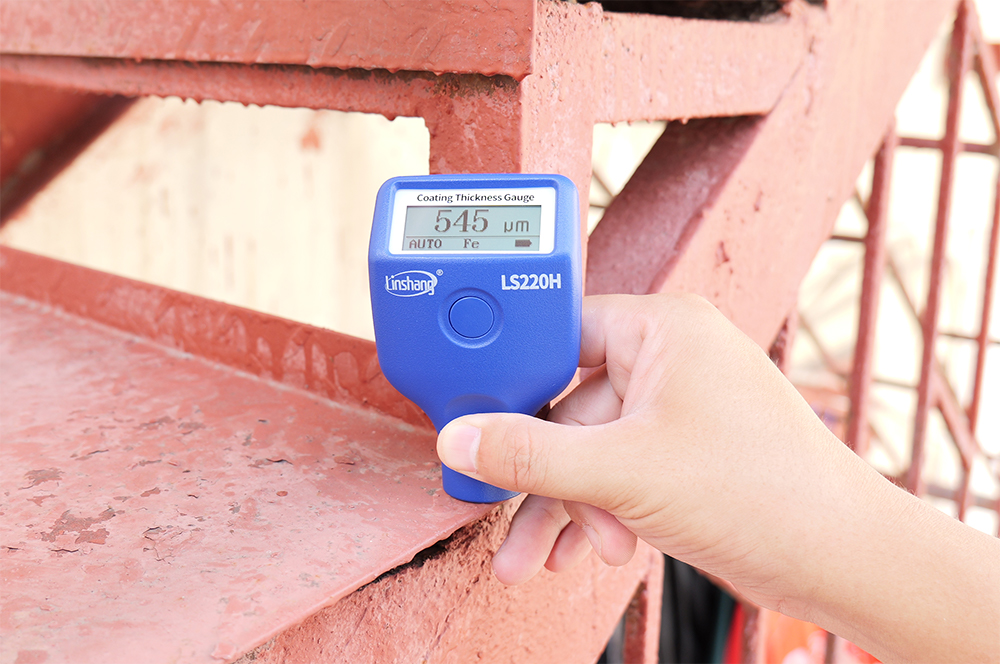How to Choose a High Precision Coating Thickness Gauge?
In industries such as painting, metal processing, and construction, a high precision coating thickness gauge is a vital tool used to measure coating thickness with accuracy and consistency. With so many options on the market, how do you choose the right one for your specific needs? Linshang Technology offers a complete product lineup designed to meet the demands of various industries. This article explores different aspects—from measurement principles and application scenarios to features and pricing—to help you choose the most suitable coating thickness gauge.
Select by Measurement Principle
Coating thickness gauges are classified into four main types based on their measurement principles:
Magnetic Induction: Used to measure non-magnetic coatings (e.g., zinc, chrome, rubber, paint) on magnetic substrates such as steel or iron.
Hall Effect: A magnetic-based method that uses a Hall sensor to detect field changes—ideal for quick coating measurements.
Eddy Current: Measures non-conductive coatings (e.g., paint, ceramic, anodic layers) on non-magnetic metal substrates like aluminum or copper.
Dual-Type (Ferrous/Non-Ferrous): Combines both magnetic induction and eddy current principles. It automatically identifies the base material and switches modes accordingly, offering wide compatibility for diverse industrial environments.
Linshang provides high precision coating thickness testers that cover all of these principles, ensuring you can find a perfect match for your base material and testing needs.
Match the Coating Thickness Gauge to Your Application
Choosing the right coating thickness gauge requires a close look at your real-world application—including substrate type, coating thickness, and material size:
Substrate Type: For ferrous metals like steel, choose magnetic induction or Hall effect models. For non-ferrous metals like aluminum or copper, eddy current models are ideal. For mixed-material scenarios, dual-type models are recommended—Linshang LS220H, LS221, and LS226 support both ferrous and non-ferrous substrates.
Coating Thickness: Thin coatings (<10μm) require higher precision, while thicker coatings (hundreds of microns or more) demand a wide measurement range. The LS220H and LS221 offer ranges up to 5000μm, perfect for thick coatings. For ultra-thin coatings like electroplating or anodized layers, the LS225 series paired with a hand-press stand ensures accurate measurements.
-
Part Shape & Size: Small pipes, curved surfaces, narrow edges, or complex geometries require different designs. The LS221 split-type coating thickness tester features a compact 71×26×22 mm probe, perfect for tight or high-positioned areas. For small, irregular parts, the LS225 combined with the F500 or N1500 probes and a hand-press stand minimizes user error and achieves repeatability of 0.1μm.
For flat sheet materials such as steel, aluminum, PCB boards, or automotive panels, the LS226 coating thickness gauge is ideal. It integrates dual measurement principles, features 0.1μm resolution, and includes a gravity-stabilized design to minimize reading fluctuation. It also supports multi-point calibration for greater accuracy and offers Bluetooth connectivity and mobile app integration for real-time data transfer and management. And the portable LS220H coating thickness gauge is ideal for field inspections, offering high performance in a compact design.
Comparing Coating Thickness Gauge Brands: What to Consider
There are numerous coating thickness gauge brands available globally. While some have long-standing reputations like Elcometer, Fischer, QNix, and DeFelsko, their instruments often come at a higher cost. Linshang Technology, with over a decade of experience and ongoing product innovation, provides a compelling alternative.
Linshang’s high precision coating thickness testers are self-developed and manufactured in-house. All models conform to metrology standards and deliver high accuracy, stable performance, and outstanding cost-effectiveness—making them a smart, professional-grade choice for industrial users worldwide.

Useful Extended Features of Linshang Coating Thickness Gauges
While many coating thickness gauges offer basic features, Linshang has enhanced its products with advanced functions:
Multiple Measurement Modes: Normal and QC modes. In QC mode, instruments like LS226 automatically determine Pass/Fail based on preset thresholds, with audible alerts and color-coded screen displays. In Normal mode, real-time continuous measurement captures data every 0.1 seconds and displays min/max values instantly.
Data Storage: All Linshang high precision coating thickness gauges include internal memory, supporting up to 9 groups of test data.
Mobile App: Selected models support wireless data transmission to smartphones. The mobile app allows real-time data syncing, report generation, and cloud sharing—greatly improving workflow efficiency.
Multi-Point Calibration: Linshang coating thickness gauge can support up to 5-point calibration, and can perform multi-point calibration on uncoated substrates to further improve measurement accuracy.
These features ensure that Linshang coating thickness testers are not just accurate but also user-friendly and suitable for rigorous industrial quality control.

Conclusion: Accurate Coating Thickness Starts with the Right Tool
Considering functionality, application scenario, and budget, here are Linshang’s top recommended models:
-
Precision for Large Flat Panels – LS226
A high precision coating thickness gauge with dual principles and dual display screens. Its gravity-based design ensures measurement stability on large surfaces like PCB boards, metal sheets, and automotive panels. Perfect for manufacturing quality control and precision inspection.
-
Universal Choice - LS220H
A classic dual-purpose coating thickness gauge that automatically identifies iron/aluminum substrates. It is suitable for most conventional industrial sites and quality inspection links and is an extremely cost-effective choice.
-
Expert for Small Areas – LS221
A split-type gauge with a compact probe—perfect for measuring small tubes, curved surfaces, or hard-to-reach areas.
-
Best for Ultra-Thin Coatings – LS225
The LS225 host can be equipped with three different probes and used with a hand press rack to meet the measurement needs of ultra-thin coatings below 10um.
Ready to take your quality control to the next level? Choose the right Linshang high precision coating thickness gauge—and make accurate measurement the cornerstone of your product quality, process control, and cost efficiency.
- Anticorrosive Coating Thickness Standard for Steel Structure
- High-precision Paint Thickness Tester Makes Measurement Easier
- How does A Paint Thickness Gauge Work and its Classification
- Linshang Online Light Transmission Meter Glass
- UVC Detector for UV Lamp of Pass-through Box
- Measurement of Optical Density


